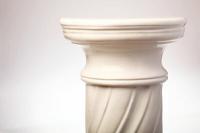Cleaning the wooden board -Tips for cleaning cutting boards
Did you know? Wooden chopping boards are prohibited in professional kitchens. The reason is that the wooden boards are very susceptible to germs. Therefore, if you use one at home, you should clean it thoroughly and pay attention to hygiene.
Wooden board - controversial in the kitchen
Most professionals recommend being in the kitchen Use plastic or glass cutting boards. Some swear by the "good old" wooden boards. If you are one of them, first pay attention to a few basic things.
- Choose good wood when buying a cutting board. Bamboo has proven itself, just like maple or hornbeam. The wood has a natural antibacterial effect. Under no circumstances should the wood contain tannins.
- Always use two wooden boards: on one of them cut fruits and vegetables, on the other cut meat and other animal products.
- Always keep the boards in the air and standing up. The best thing to do is to lean them against the wall where they won't bother you.
- Rub them lightly with cooking oil once or twice a year to seal the wood. To wash Don't drain the oil right away, let it soak in.
The worktop in the kitchen is a place where germs and bacteria cavort. …
Now you already have all the tips for the general handling of the boards ready. But how do you clean them properly after use?
Cleaning properly - this is how you prevent germs
- After using the board, immediately rinse it off with cold water. You can also use some dishwashing detergent. This is the first step in cleaning thoroughly.
- What helps to kill germs is hot water. Many wooden board users swear by pouring a load of water from the kettle over the board after rinsing it with cold water.
- If that is not enough for you, you can also use aids. It is popular to rub the board with lemon juice because it has an antibacterial effect. Then rinse it again thoroughly.
- Coffee grounds can also help with cleaning. However, it does not sterilize, but frees the board from stubborn taste residues such as fish or onions. Simply rub the coffee grounds into the wood and then rinse the board thoroughly.
Last but not least, you can level the deep cuts on the wooden board, where germs tend to collect, with fine steel wool. Rub it over the board, then rinse it clean. Right after that, you should have that wood have now roughened, follow the treatment with the cooking oil.



